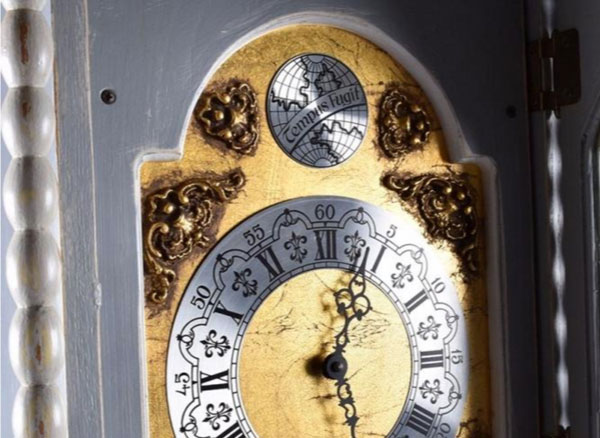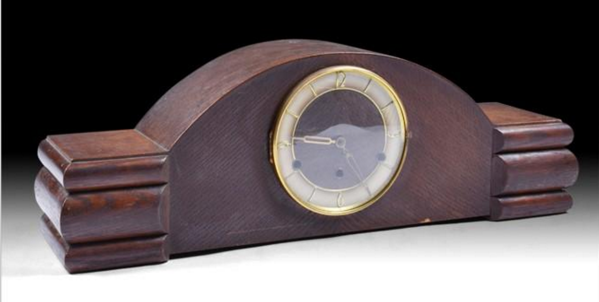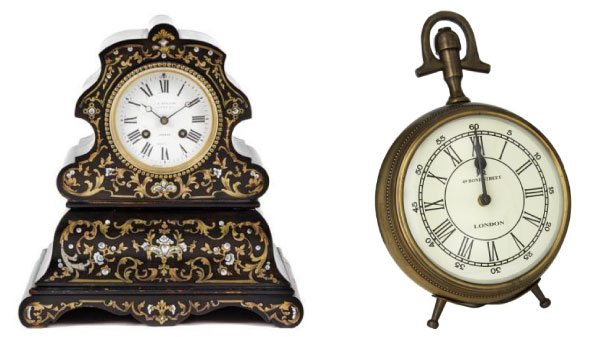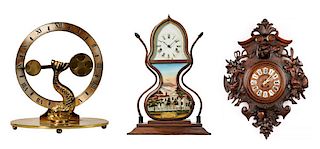Five Fun Facts for Clock Conversation
Keeping time surrounds us on walls, furniture, our wrists and phones. A long-standing keeper of the time, the clock, is working hard every day. Isn’t it time you got to know your clock a little better? Here are five fun facts for your next clock conversation…
1. When is a clock not a clock?
When it’s a timepiece! The word “clock” comes from the Dutch word “glock,” which means bell. The word “clock” was used to ring a bell. When a clock doesn’t strike or chime, it’s a timepiece.
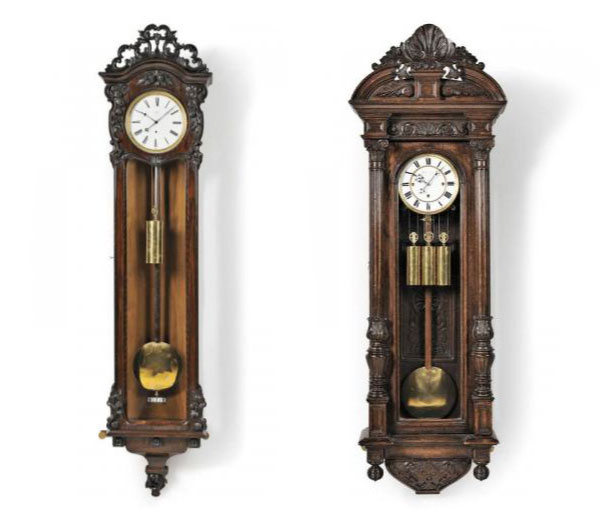
Similar looks, however on the left is a Mayer Year-duration Vienna Regulator Timepiece and on the right a Carved Thirty-day Vienna Regulator Wall Clock, both in Skinners upcoming Clocks, Watches & Scientific Instruments auction April 29.
2. What does “Tempus Fugit” mean on a clock dial?
Instead of a brand name, it is actually a Latin phrase that translates into English as “time flies”.
Detail of a Shabby Chic Grandfather Clock c. 1980s emblazoned with the words "Tempus Fugit" in Shabtais upcoming auction on April 20th
3. Is there music in the chime of a clock?
Yes! In fact, the Westminster chime has words that go along with the melody and the words go like this:
Lord through this hour
Be Thou our guide
So by thy power
No foot shall slide.
An Art Deco Mantle Clock by Westminister c. 1930s in Shabtais upcoming April 20th auction
4. What were early clocks like?
In early days, a clock’s movement was cased in a small box with a dial on the front and hung on the wall while the pendulum and weights hung free in the open air. A breeze could easily upset the pendulum since there was nothing to protect it, which resulted in the clock to stop working. To solve this problem, cabinets were built around the pendulum to protect it and the clocks stood on the floor instead of hanging in the air.
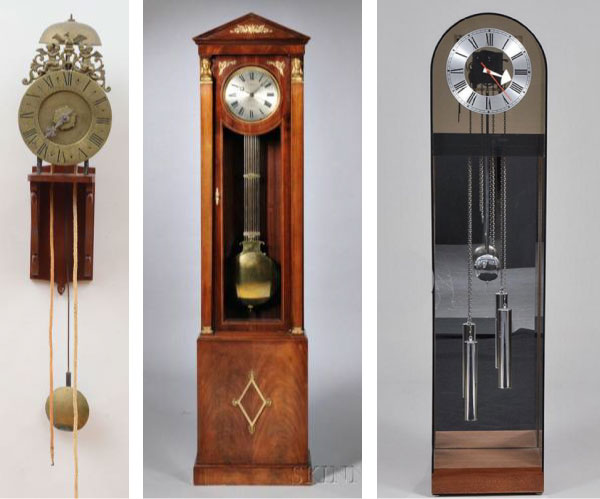
Left: A Dutch Baroque Brass Pendulum Clock in Stair Galleries upcoming May 1st auction; Middle: A Guerre Three-month-duration Floor Regulator in Skinners upcoming April 29th sale; Right: A George Nelson Designed Lucite Tall Case Clock in Auction Gallery of the Palm Beaches April 25th auction
5. Why is the number four written on some clock dials as ‘IIII’ and others ‘IV’?
The numbers 1 to 10 are usually expressed in Roman numerals as follows: I, II, III, IV, V, VI, VII, VIII, IX, X. Many clock historians claim that IIII provided artistic balance, since you mentally pair it off with VIII on the other side of the dial, which is why four was displayed as IIII. At least as far back as 1550, ‘IIII’ has been used on the clock dial. The modern subtractive method for four (IV) is used today, as well as IIII. IIII seems to be the preference still today.
Left: A French Brass and Mother-of-Pearl Inlaid Mantle Clock with the four written as IIII in Leslie Hindman Auctioneers April 20th auction; Right: A modern desk clock with the four written as IV.
Leslie Hindman Auctioneers is bringing a collection of fine clocks in its Fine Furniture and Decorative Arts Auction April 20-21. Skinner has put together an entire auction dedicated to clocks, watches and scientific instruments on April 29.
- Artist Spotlight: David Gerstein, Sculptural Pop in Bold Color & Motion
- The History of Rolex Watches: Innovation, Precision, and Enduring Prestige
- Preview the December Doyle+Design Auction: A Celebration of Modern & Contemporary Mastery
- Billings Winter Design 2025: A Celebration of Modern Mastery Across Eras
- The Ultimate Holiday Gift Guide: Luxe Finds From Bidsquare’s Finest Auctions
- Fine & Antique Jewelry Sale: A Curated Journey Through Craftsmanship & Design
- Upcoming Auction Spotlight: Doyle’s Fine Art: 19th Century & Early Modernism
- Entertain with Style This Holiday Season: Highlights from Doyle’s December 8 Auction
- Six Standout Lots from Newel’s Fine Jewelry, Timepieces & Luxury Handbags Sale
- Artist Spotlight: Roy Lichtenstein, Pop Art’s Master of Bold Lines & Bigger Ideas



 EUR
EUR CAD
CAD AUD
AUD GBP
GBP MXN
MXN HKD
HKD CNY
CNY MYR
MYR SEK
SEK SGD
SGD CHF
CHF THB
THB